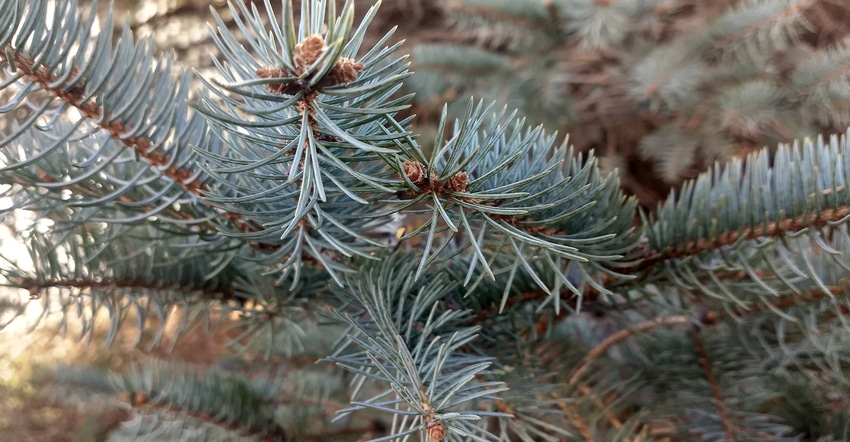
Were you among the tens of thousands of Americans who bought 25 million to 30 million real Christmas trees sold from 15,000 tree farms in the U.S. this season? Or did you cut your own tree on your own farm?
With more than 350 million real Christmas trees growing in the U.S., you probably had plenty of trees to choose from. While many consumers turn their noses up to the fresh fragrance of a real tree, or a few pine needles on the carpet, our family embraces the beauty a real tree offers.
I suppose the fact that we raised real Christmas trees for 20 years might make us a little biased. One of the main questions our customers asked every year was what to do with the tree after the holidays.
This question gave us the opportunity to talk about the fact that real trees are renewable and recyclable, unlike their nonbiodegradable plastic counterparts that will survive in a landfill for a long time.
If you are looking for ways to use your real Christmas tree beyond Christmas, here are a five ideas from veteran tree growers:
1. Bird feeder. Remove all the tinsel, ornaments and lights. You can move your tree to the yard or garden and hang strings of popcorn, cranberries or raisins — along with apples, oranges, leftover bread and pine cones smothered in peanut butter and dipped in birdseed — as an added treat. These wildlife-friendly morsels offer protein and energy for winter birds. Cedar waxwings, finches and robins that are still around in the winter will love the cranberries and raisins. Popcorn is sought by cardinals, finches and grosbeaks. If you really want to attract birds to your real tree feeder, add a water source nearby.
2. Fish habitat. Real trees can find new purpose as a fish habitat at the bottom of your farm pond or lake. You can remove a few limbs to create some spacing, and then attach heavy concrete blocks to the trees to sink them in the pond. These structures can provide a hiding place and habitat for numerous fish and invertebrate species. As they decompose, they will release nutrients into the pond that eventually will enhance the food web. Location can be a key for developing fish habitat, so contact your state game and fish commission or local natural resources or fisheries specialist for help.
3. Landscape or trail mulch. If you have a tree or mulch grinder, you can chip limbs and trunks into landscape mulch for gardens, nursery beds and landscaping — or for soil erosion control or waterway bank stabilization — around your farm and ranch. Finely ground tree mulch can serve as a protectant for newly planted trees, to prevent mowers from colliding with the trees, keeping the weeds down, conserving water in the root zone and slowing the changes in soil temperature to allow the newly planted trees more time to adjust to extreme changes in weather. Natural mulches also work well on hiking trails.
4. Firewood. Some evergreen Christmas trees work as a cheap source of firewood. According to a wood heating guide from the Utah State University Forestry Extension, most pines, spruce, fir or cedar make only fair-quality firewood at best, although they all will split easily. Of the well-known Christmas tree species on the list, Douglas fir has few sparks, a slight fragrance and medium smoke. White pine has moderate sparks and good fragrance. If you use Eastern redcedar for your Christmas tree as my family did when I was young, you should know that the wood offers a relatively good fragrance but could give off many sparks in a fire. Nearly all the conifers provide less heat units in the fire than green ash or applewood, which are considered the gold standard. Also, evergreen wood could build up combustible creosote in a stovepipe or chimney over time.
5. Recycling programs. There are more than 4,000 local Christmas tree recycling programs in the U.S. Check with your local Boy Scouts or other civic organizations if they offer rural tree pickup or recycling programs. These programs will collect the trees and typically grind them into mulch for park areas or use them for fish habitat programs in local ponds.
Get more recycling tips at realchristmastrees.org.
About the Author(s)
You May Also Like






